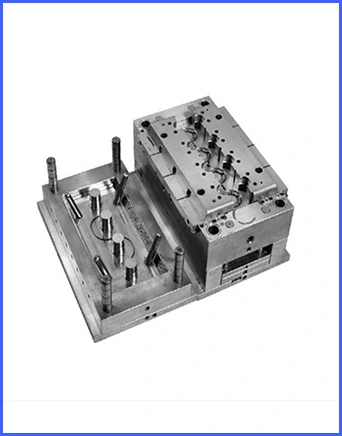Time to read: 6 min

In the intricate process of plastic injection molding, the incorporation of draft angles is indispensable for the manufacturability and quality of parts. This comprehensive guide provides insights into the critical role of draft angles, their benefits, and best practices for design to ensure efficient injection molding processes.
The success of plastic injection molding projects often hinges on meticulous design considerations, with the draft angle being a key yet frequently overlooked aspect. Properly executed, draft angles facilitate the ejection of molded parts from the mold, preventing defects and ensuring a smooth production process.
What is a Draft Angle?
A draft angle in injection molding refers to the tapering angle applied to the side walls of a part, designed to enable easy release from the mold cavity. This angle is essential as it aids in the separation of the part from the mold, reducing the potential for damage during ejection.
Benefits of a Draft Angle
Draft angles are not merely a design feature; they are critical for maintaining part quality and preventing a range of issues stemming from friction and vacuum during the ejection process. The benefits of incorporating draft angles include:
- Achieving smooth, uniform, and unscratched part finishes.
- Minimizing the risk of part damage due to friction during ejection.
- Preserving the uniformity and integrity of surface textures and finishes.
- Reducing wear and tear on molded parts.
- Decreasing the likelihood of mold damage.
- Minimizing part warping.
- Reducing overall cooling time by simplifying the ejection process.
- Lowering production costs by avoiding complex ejection mechanisms.
Draft Angle Design Guide and Best Practices
It's important to recognize that a one-size-fits-all approach to draft angles doesn't exist, as each part has unique requirements. Here are some general guidelines and best practices for designing draft angles effectively:
1. Start with a Draft Angle of 1? to 2 Degrees
For parts with depths up to 2 inches, this rule of thumb helps prevent part damage during demolding when thermoplastic materials shrink.
2. Increase the Draft Angle for Deeper Parts
For each additional inch of depth, consider adding an extra degree to account for increased surface area and friction.
3. Align Draft Angles with Mold Separation Direction
Draft angles should follow the direction of mold separation, ensuring that the part's top is slightly wider than the bottom.
4. Textured or Complex Surfaces May Require Additional Draft
For parts with intricate textures or complex surfaces, consider increasing the draft angle to facilitate easier ejection.
5. Apply Draft Angles to All Component Surfaces
Even features such as gussets, louvers, and ribs should incorporate draft angles if they contact the mold.
6. Double Draft Angles for Enhanced Ejection
For parts with parting lines in the middle, applying draft angles to both sides can enhance the ejection process.
7. Maintain a Minimum Draft for Vertical Surfaces
Even if it seems minimal, a half-degree draft is recommended for vertical surfaces to facilitate ejection.
8. Always Incorporate a Draft Angle
Remember, any draft is better than no draft. Even if it seems minimal, it's crucial to incorporate some degree of draft angle.
Conclusion
Draft angles are indispensable for successful part design in injection molding. They ensure effective production processes and contribute to high-quality outcomes. Ignoring draft angles can lead to scrap parts and mold damage. Staying informed about best practices, including the use of draft angles, is crucial.
At Unofactory, we specialize in injection molding and are ready to share our expertise with you. Our engineers have a deep understanding of injection molding best practices and can assess your designs to offer suggestions. We provide free Design for Manufacturability (DFM) analysis to ensure the best results from your part design.
For any inquiries or design discussions regarding draft angles and injection molding, Unofactory is here to help. We also offer part inspection services to ensure readiness for the molding process.
FAQ – Draft Angle for Injection Molding
What Should Be the Draft for Polyethylene Material?
A draft angle of 1 degree per side is recommended for polyethylene materials to facilitate easy release of parts from the mold cavities.
How to Calculate Draft Angle?
Draft angles are calculated as degree measurements from the vertical axis of the mold, accounting for the shrinkage of plastic materials.




